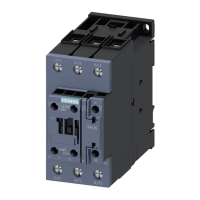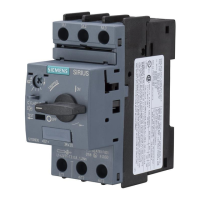Glossary
SIRIUS Innovations
System Manual, 01/2011, A8E56203870002-03
773
Starting voltage
The starting voltage determines the starting torque of the motor for SIRIUS soft starters. A
lower starting voltage results in a lower starting torque and a lower starting current. The
starting voltage selected must be sufficiently high to ensure that motor starts up smoothly as
soon as the start command is received by the soft starter.
Switching frequency
Number of operating cycles per time unit (e.g. 15 operations per hour).
The maximum permissible switching frequency must not be exceeded because the SIRIUS
soft starters could be damaged due to thermal overloading. The switching frequency of
SIRIUS soft starters size S0 to S3 can be increased by installing an optional additional fan.
Switching technology
A basic distinction can be made between two types of switching technology: On the
electromechanical side, there are contactors, contactor assemblies, and compact starters
which can be used to implement solutions for direct-on-line start, reversing start, and star-
delta (wye-delta) start. Frequent switching or reversing, soft starting, and soft ramp-down, on
the other hand, are initiated using electronic switching devices: solid-state switching devices
and soft starters. The SIRIUS modular system offers the right solution for every type of
switching technology.
Temperature compensation
With inverse-time delayed (thermal) overload releases and relays, not only the current, but
also the ambient temperature has an effect on the tripping time. An additional bimetal strip,
which is not heated up by the current, can be used to compensate for the influence of the
ambient temperature. If solid-state overload relays are used, electronic compensation is
possible.
Terminals for "Self Protected Combination Motor Controller Type E"
The terminals conform to the clearances and creepage distances stipulated by UL 508
(Type E).
Thermistor motor protection
Motor protection provided by temperature sensors (PTC sensors) integrated in the windings.
These sensors monitor the winding temperature directly.
Time-delayed auxiliary switch
Module which can be integrated into various combinations of auxiliary switches and can
usually be retrofitted to a switching device too.

